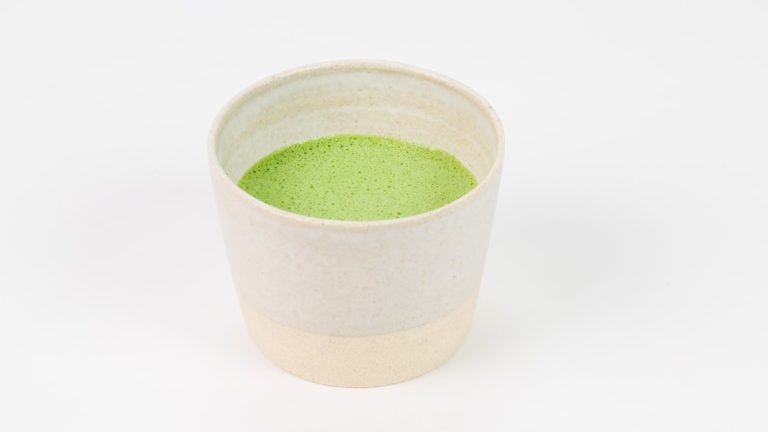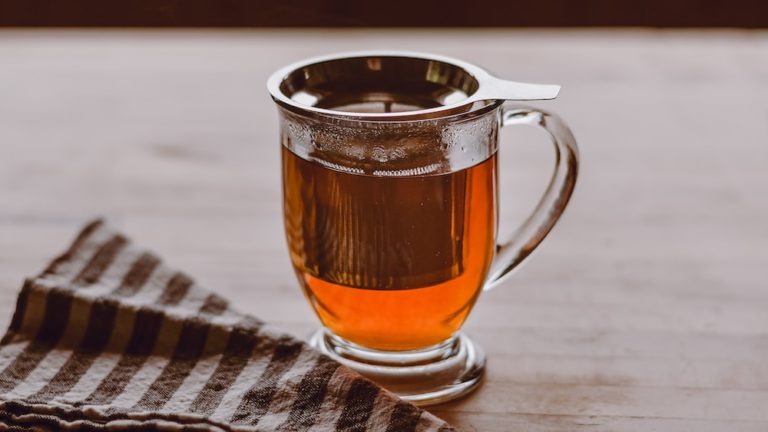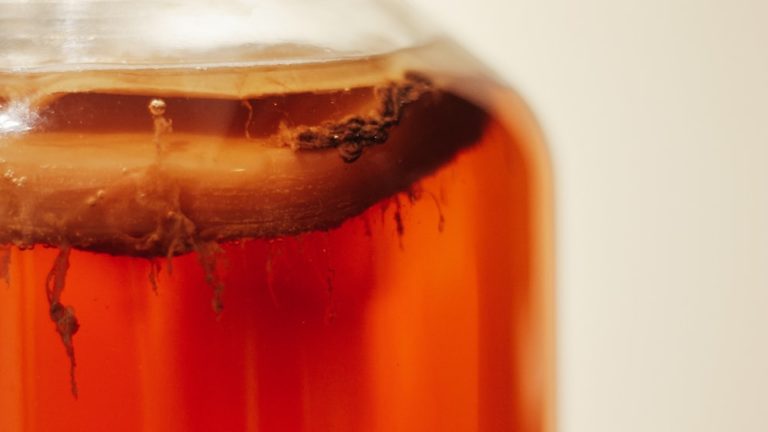Pu-Erh Kombucha: The Ultimate Guide To Pu Erh Tea Kombucha
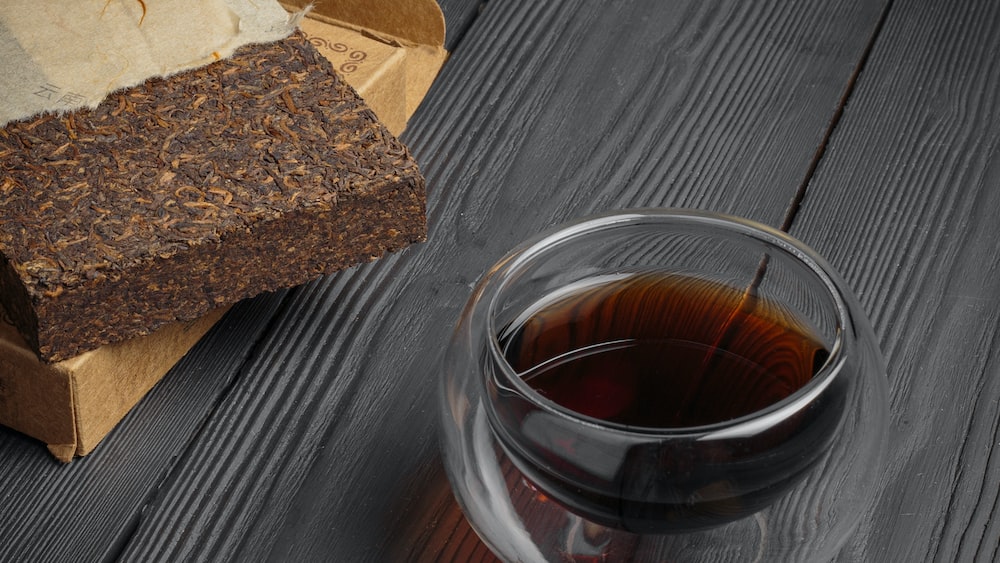
Pu-Erh Kombucha: The Ultimate Guide To Pu Erh Tea Kombucha
Hey there, fellow tea lovers and fermentation fanatics! Have you ever marveled at the earthy magic that is pu erh tea kombucha? It’s this spellbinding concoction where ancient Chinese tradition dances with a trendy, probiotic twist to create a beverage that have health aficionados and tea enthusiasts buzzing. Trust me, it’s more exciting than finding that lost sock from the laundry – because this combo could seriously rock your world.
Key Points:
- Pu-Erh kombucha is a blend of ancient Chinese pu-erh tea and probiotic-rich kombucha.
- Pu-Erh tea undergoes a unique fermentation process, resulting in a complex, earthy flavor profile.
- Pu-Erh tea offers digestive aid, weight loss support, and antioxidant properties.
- Kombucha is fermented tea with a culture of bacteria and yeast, offering numerous health benefits.
- Combining pu-erh tea with kombucha creates a symphony of taste and health perks.
- Making pu-erh tea kombucha involves brewing the tea base, fermenting with a SCOBY, flavoring, and bottling.
Now, before you start picturing kombucha SCOBYs doing the tango with tea leaves, let’s get down to the nitty-gritty of what this elixir is all about. Imagine a drink that’s not just a joy to your taste buds but also a cuddle for your gut health, with a lineage that’s as rich as a triple chocolate cake – and just as indulgent. We’re talking an epic journey through time, with the fusion of pu erh tea’s digestive prowess and kombucha’s bubbly personality.
So grab your favorite mug and settle in, because we’re about to embark on a tantalizing tour of pu erh tea kombucha. You’ll learn about its storied past, its surprising health benefits, and even how to whip up your own batch at home. Spoiler alert: it’s going to be as fun as getting the high score on your favorite arcade game. Ready to geek out over some serious tea science and history? Let the adventure begin!
The Origins and History of Pu-Erh Tea
Trek with me through the misty mountains of Yunnan, China, where pu erh tea – a true ancient heavyweight of the tea world – has its roots. This isn’t just any old tea leaf; we’re talking about a brew that has piqued the curiosity of emperors and common folk alike for centuries. With its complex flavors that can rival a fine wine, pu erh has become a stuff of legends, mentioned in tales and enjoyed across generations.
What is Pu-Erh Tea?
Now, let’s expand our tea horizons and delve into what, exactly, pu erh tea is. Pu erh tea is like the chameleon of the tea universe; it undergoes a unique fermentation process that transforms it over time, much like a reverse Benjamin Button scenario. The result? A complex, earthy flavor profile that becomes smoother and richer as it ages.
Whether you’re sipping on the raw (sheng) or the ripe (shou) variety, think of pu erh tea as a fine scotch that’s been given time to mature gracefully. But instead of ending up with notes of peat or smoke, you get a brew that toggles your taste buds with layers of earthy depth and a faint whisper of sweetness.
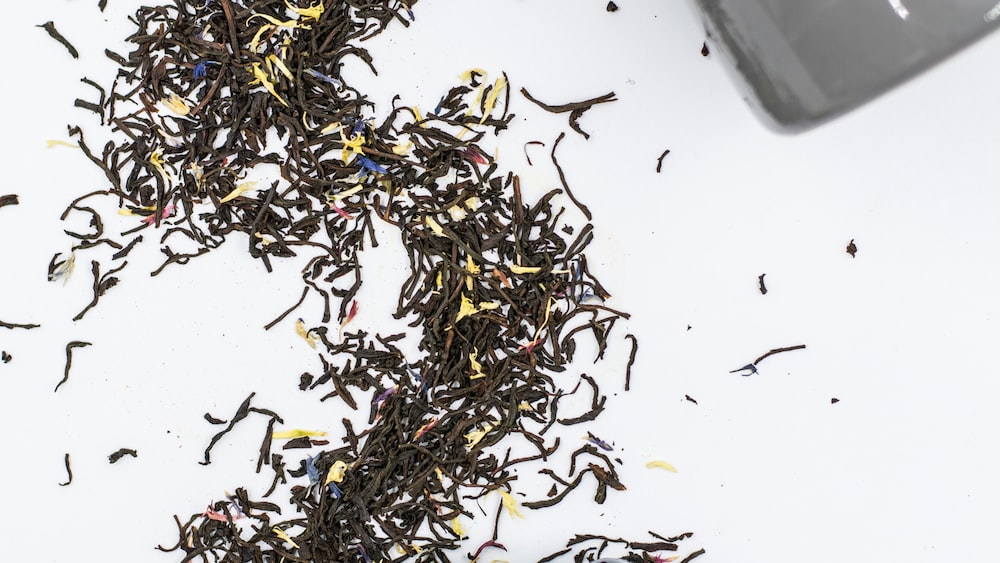
Pu erh tea undergoes a unique fermentation process that transforms it over time, resulting in a complex, earthy flavor profile that becomes smoother and richer as it ages, akin to a fine scotch that matures gracefully.
The Ancient Roots of Pu-Erh Tea
To truly appreciate this tea, we must time travel to ancient China, where pu erh tea all began. Picture it as the Instagram influencer of the Tang Dynasty, gaining fame and love throughout the land. It traveled along the Silk Road, putting on miles and gaining followers, kind of like an old-school travel blogger but with more tea leaves and horse-drawn carts.
In those early days, pu erh was the beverage of choice not only for its taste but also for its rumored medicinal properties. It was pressed into cakes for easy transport, making it the go-to travel-friendly superfood before we ever dreamt up the term. Kings and poets sang its praises, and if that isn’t a seal of approval, I don’t know what is.
The Health Benefits of Pu-Erh Tea
As for the health benefits of pu erh tea, well, they’re as hefty as the catalog of a seasoned shopaholic. This ancient brew isn’t just good for the soul; science gives it a big thumbs up for the body, too. We’re talking about a full package that supports digestion, battles free radicals, and might even help you step down a notch on your belt.
Digestive Aid and Weight Loss
Let’s chew on the benefits that pu erh tea brings to the digestive table:
- First up, it’s a natural pick-me-up for your digestion. Think of it as a personal assistant that helps your stomach process that triple-layer burger you couldn’t resist.
- And the whispers about weight loss? Well, they aren’t just old wive’s tales. Studies suggest pu erh could help you bid farewell to those stubborn love handles, making it a fantastic wingman for your fitness journey.
Antioxidant Properties of Pu-Erh Tea
Pu erh doesn’t just flex its muscles in the gym; it’s also loaded with antioxidants that fight oxidative stress like a superhero battles villains. This is where sophisticated vocab enters, my friends – pu erh’s polyphenols are the caped crusaders keeping your cells safe from the jabs and punches of free radicals.
- Talk about a dynamic defense system: these compounds are like the special agents of your body, safeguarding your wellbeing.
- Research shows that pu erh’s antioxidants may even have anti-aging effects, which means sipping this tea could keep you looking fresh and fab.
Understanding Kombucha and Its Benefits
Here’s the lowdown on kombucha, or ‘booch’ as it’s fondly called by those in the know. In a nutshell, kombucha is fermented tea that’s been kicking it with a culture of bacteria and yeast, a squad we love to call the SCOBY. This party in a bottle offers up a myriad of health benefits, from improving digestion to boosting your immune system.
The Fermentation Process of Kombucha
The life of booch starts off simple – just some sweetened tea left to chill with a SCOBY. But this leisurely soak isn’t for relaxation; it’s where the magic of fermentation unfolds.
- First, our SCOBY buddy dives into the tea and starts munching on the sugars, performing a balancing act of converting them into acids and creating a tangy flavor profile that makes kombucha the tart-tastic drink we adore.
- Then, as the days roll on like a lazy Sunday afternoon, the SCOBY’s activity transforms the tea into a fizzy, vinegar-like potion that’s oddly irresistible – think apple cider’s eclectic cousin who visits once a year and somehow always spices up the family gatherings.
The magic of fermentation transforms sweetened tea into the tangy and fizzy kombucha we love, as the SCOBY munches on sugars and creates a unique flavor profile.
Kombucha’s Probiotic Power
Ever wonder what gives kombucha its well-deserved reputation as a digestive deity? It’s the probiotics – those friendly little microorganisms that turn your gut into a thriving metropolis of health.
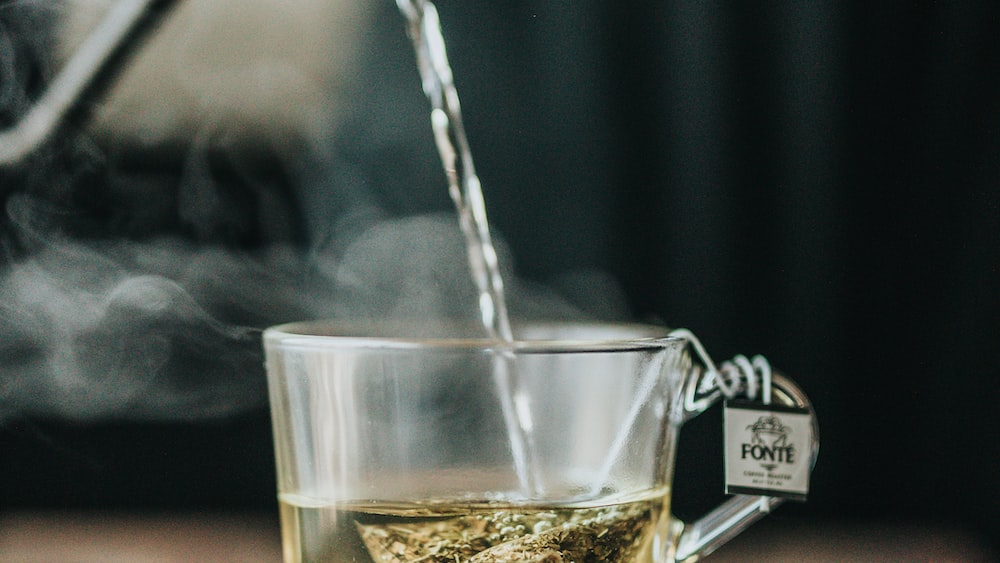
- These microbiotic inhabitants are the true superheroes, building up your digestion’s defenses against rogue elements and maintaining peace and order like tiny sheriffs in the Wild West of your intestines.
- A swig of booch is akin to deploying a SWAT team of probiotics into your system – which is great for keeping your digestion running smoother than a politician’s promises.
Combining Pu-Erh Tea with Kombucha Brewing
Merging the earthy mystery of pu erh tea with the effervescent zing of kombucha is like combining a vintage vinyl collection with the latest streaming tech – it’s a perfect harmony of old and new. And let me tell you, when these two worlds collide, the result is a symphony of taste and health perks.
Why Pu-Erh Tea Makes a Great Base for Kombucha
Why pick pu erh as the frontman for your kombucha band? Well, for starters, its bold and complex flavor can stand up to the tanginess of the fermentation process, like a rockstar belting out tunes in the midst of pyrotechnics without breaking a sweat.
- Pu erh tea infuses the booch with depth and an exotic twist, turning your everyday kombucha brew into an extravaganza of taste that’s as memorable as your first rollercoaster ride.
- Bonus points for the additional health perks! By choosing pu erh, you’re essentially supercharging your kombucha with a double whammy of antioxidants and digestive aids. Think of it as putting a supercharger in your car – you’re not just driving, you’re flying down the health highway!
Choosing pu erh as the main ingredient for your kombucha adds bold flavors, depth, and health benefits, turning your brew into an unforgettable taste experience.
Raw vs. Ripe Pu-Erh Tea for Kombucha
Now, when you’re standing before the pu erh aisle, contemplating life and tea choices, you’ll find yourself facing the raw (sheng) versus ripe (shou) pu erh dilemma. It’s like choosing between two equally enticing desserts – one’s got that fresh, zesty zing while the other offers a deep, mature sweetness.
- Raw pu erh is the maverick of the duo, with a sharper edge that matures over time; think of it as the bad boy of the tea world – intense at first, but with a heart of gold.
- Ripe pu erh, on the other hand, has already gone through the paces, offering a smoother, more mellow vibe from the get-go, like that jazz musician whose tunes slide into your soul with ease.
Whichever you choose, your pu erh tea kombucha is bound for greatness – filled with personality and a storyline that keeps you captivated sip after sip. Now, isn’t that just brimming with potential for a warm and fuzzy tea time tale?
Step-by-Step Guide to Making Pu-Erh Tea Kombucha
Brewing the perfect pu erh tea kombucha at home might sound daunting, but let’s demystify the process with a foolproof guide! Imagine you’re a mad scientist in the comfort of your own kitchen, concocting a magical elixir that not only tickles your taste buds but also packs a healthful punch!
Brewing Your Pu-Erh Tea Base
Kick things off by steeping your pu-erh tea in water that’s just shy of boiling – a grumpy 95°C should do the trick. Any hotter and you risk turning your tea into a bitter potion, and we wouldn’t want that, would we? Let the leaves freestyle in the hot tub for around 5 minutes – long enough to impart their earthy essence, but not long enough to start recounting their life stories. Strain the leaves, utter a spell for good measure (optional), and let the brew cool down to room temperature.
Now, I hear you ask, “How much tea should I use?” A tried-and-true ratio is about 1 tablespoon of pu-erh tea for every cup of water. Feel free to tweak the strength to your liking – after all, this isn’t potion class at Hogwarts, and there won’t be any points deducted for creativity!
The Fermentation Process with SCOBY
With your pu-erh tea base crafted, it’s time to introduce it to your SCOBY (Symbiotic Culture of Bacteria and Yeast). Picture this SCOBY as a jellyfish-like ally, gently plopped into the tea. It’s essentially the life of the party in your kombucha’s fermentation fiesta.
Next, whisper sweet nothings to your concoction by adding a cup of previously brewed kombucha or starter tea – this helps to acidify the environment, setting the stage for fermentation success. Secure a clean cloth or coffee filter over the top of your brewing vessel with a rubber band – think of it as a little hat that lets your brew breathe while keeping any party-crashing microbes out.
Over the next 7 to 14 days, the SCOBY will work its magic, transforming your pu-erh tea into tangy, fizzy kombucha. You’ll want to check on your brew periodically, not just for company but to ensure the pH drops below 4.0 for safe sipping. You’ll notice the SCOBY thickening and new layers forming, a telltale sign that your SCOBY’s doing its job and your pu erh tea kombucha is almost ready to meet the world.
Introduce your pu-erh tea base to the SCOBY and provide the right environment for fermentation success to create tangy, fizzy kombucha.
Flavoring and Bottling Your Pu-Erh Kombucha
Once your pu erh tea kombucha has fermented, the real fun begins with flavoring and bottling. This is where your creativity can leap off the springboard and do a triple somersault into the pool of possibilities!
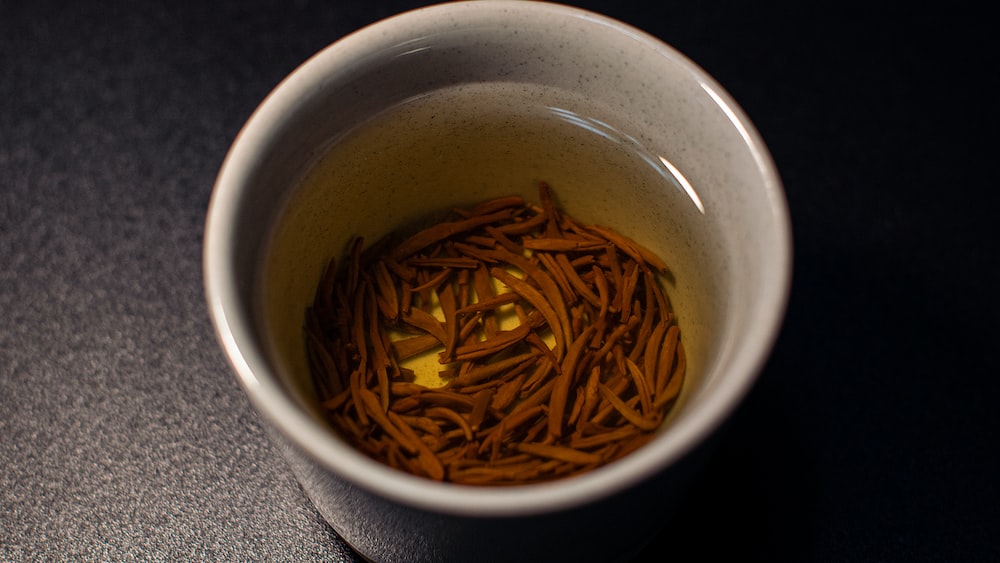
Wildberry Hibiscus and Other Flavor Combinations
When it comes to suiting up your pu erh tea kombucha for the big flavor parade, the sky’s the limit! Wildberry hibiscus? It’s like a berry brigade marching on your taste buds with floral air support. Or maybe you fancy a citrus twist? Imagine pomelo pieces wearing tiny sunglasses, floating in your kombucha, soaking up the sun. Here’s an idea:
- Unleash a blend of fruits and herbs: Try muddling raspberries with mint, or get exotic with passion fruit and lemon balm.
Remember, the flavors will continue to develop and intensify during the second fermentation, so less can indeed be more.
Tips for Bottling and Carbonation
Alright, you’ve chosen your flavor armada; now let’s bottle it up! Make sure your bottles are clean and ready for action – the last thing you want is an invasion of unwanted bacteria crashing your kombucha bash. A funnel is your friend here, guiding your precious tea into bottles like a gentle stream of future happiness.
Time for the second ferment! Seal your bottles tightly and let them rest at room temperature. This is when the magic of carbonation happens, as the yeast parties on with the sugars, creating those delightful bubbles. But, keep your eye on the fizz:
- Check the pressure daily by giving the bottles a gentle squeeze, especially if you’re using plastic.
- After a few days, start taste-testing.
- Once your kombucha has reached peak sparkle, refrigerate to slow fermentation.
Seal your bottles tightly and let them rest at room temperature to allow the magic of carbonation to happen, but remember to check the pressure daily and start taste-testing after a few days.
FAQs
1. Can any type of Pu-Erh tea be used for making kombucha?
Any type of Pu-Erh tea can be used for making kombucha, whether it’s raw, ripened, loose leaf, or compressed. What matters is the quality of the Pu-Erh and your personal flavor preference.
2. How does Pu-Erh tea affect the taste of kombucha?
Pu-Erh tea affects the taste of kombucha by giving it a distinctive earthy and rich flavor, with bold notes that can range from floral to smoky, adding complexity to the kombucha’s profile.
3. What are the signs of successful fermentation with Pu-Erh tea kombucha?
Signs of successful fermentation with Pu-Erh tea kombucha include a tangy taste, slight vinegar scent, a drop in pH below 4.0, and the formation of a new SCOBY layer on top.
4. How long should Pu-Erh tea kombucha ferment for optimal benefits?
Pu-Erh tea kombucha should ferment for about 7 to 14 days for optimal benefits, but always monitor taste and carbonation levels to reach your preferred balance.
Conclusion
We embarked on an intoxicating journey through the tea-leaf-laden paths and bubbly brooks of kombucha brewing. Who knew that the ancient art of crafting pu erh tea kombucha could be such a thrilling adventure?
From selecting the finest pu-erh tea leaves to sharing a quiet moment with your SCOBY, every step is a chance to deepen your connection to this timeless tradition. Remember, like the best tales, each batch tells its own unique story, a liquid narrative steeped in personal flair.
May your kombucha adventures bloom with vibrant probiotics and the rich tapestry of pu-erh’s history. Until we brew again, keep those SCOBYs snuggled, and your tea leaves dancing.
Signing off with a warm cup in hand and bubbling anticipation for your fermentation creations, Zoe



